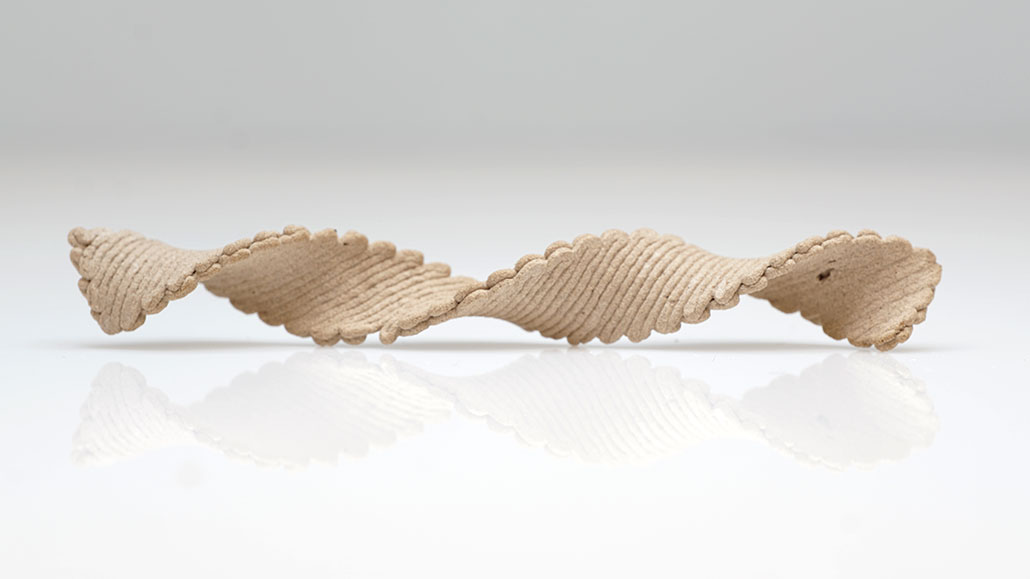Questions for ‘No trees were harmed to 3-D print this piece of wood’

This helix started as a flat strip of 3-D printed wood that curled into its present shape only as it dried. A faster print speed causes the helix to curl tighter than strips printed more slowly.
D. Kam